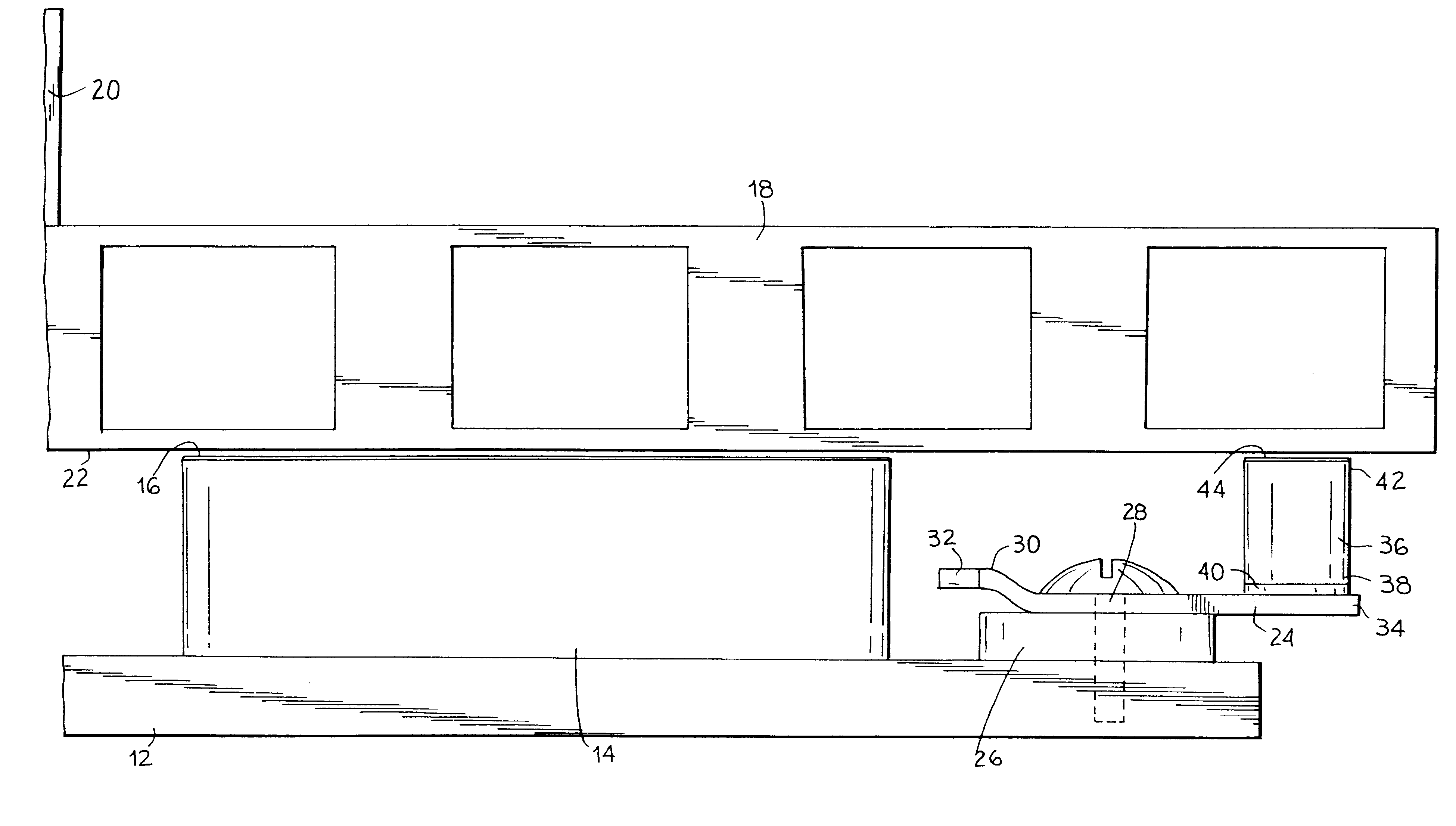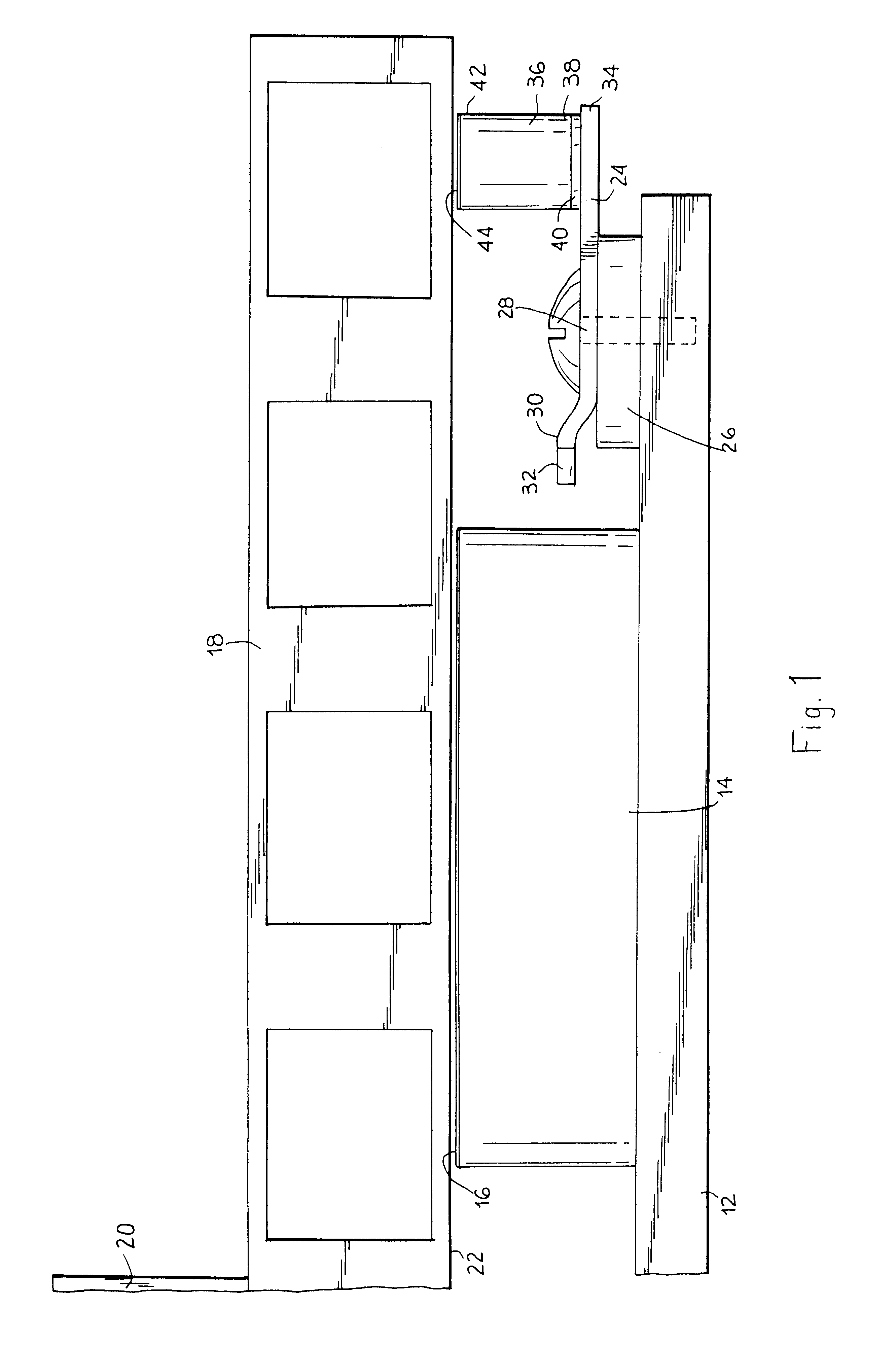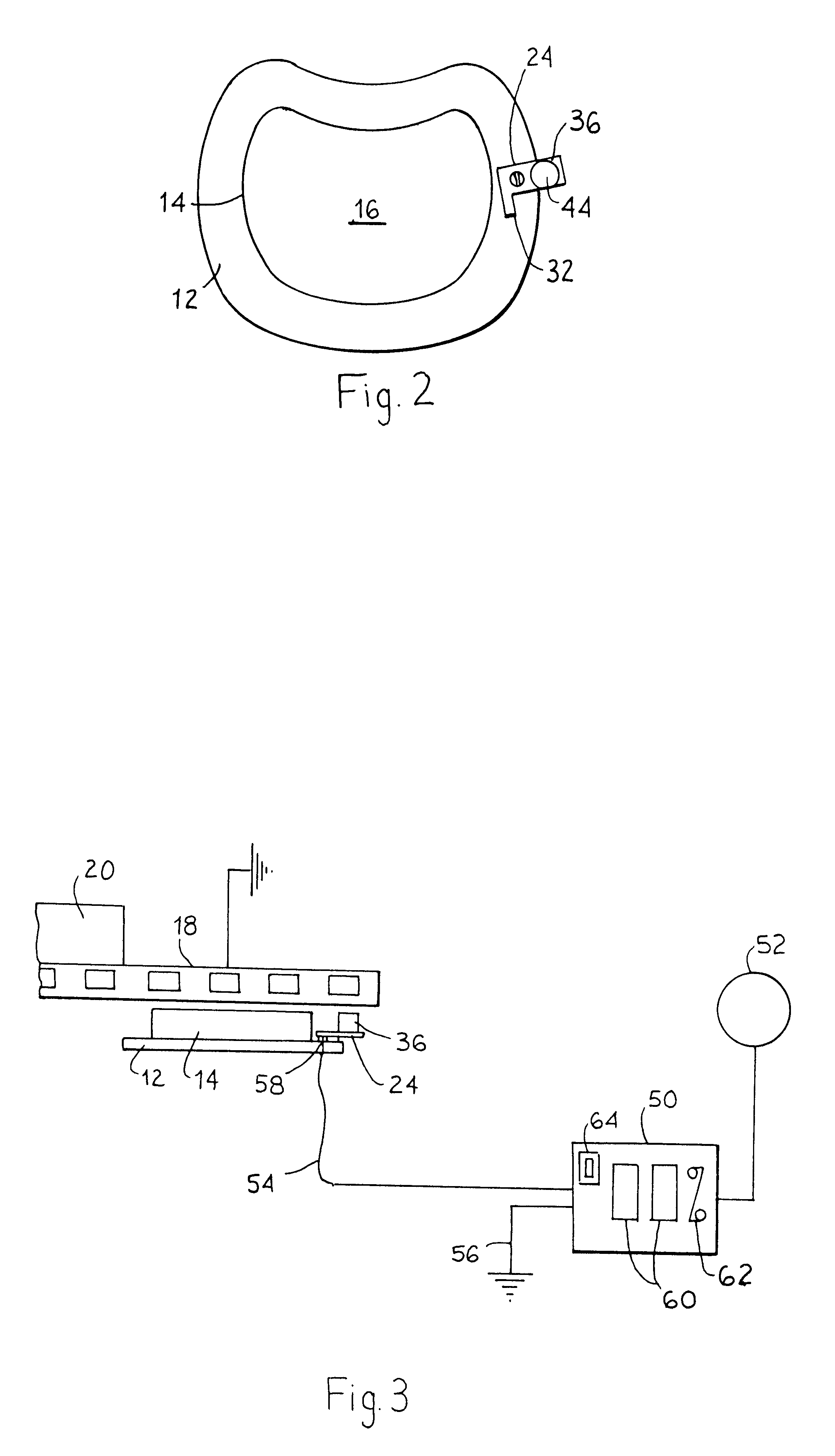Brake pad wear sensor
a technology of wear sensor and brake pad, which is applied in the direction of braking system, force/torque/work measurement apparatus, instruments, etc., can solve the problems of failure of indicators that locate electrical circuitry or sensitive components, the amount of wear left on the brake pad, and the design of the brake pad life being cut shor
- Summary
- Abstract
- Description
- Claims
- Application Information
AI Technical Summary
Problems solved by technology
Method used
Image
Examples
Embodiment Construction
Referring now to FIGS. 1 and 2, a brake pad backing plate 12 supports a brake pad 14. The brake pad backing plate fits into a caliper (not shown) in a conventional manner. The brake pad has a contact or brake surface 16 for pressing against a brake rotor 18. The rotor 18 is attached to and rotates with a wheel hub 20. When a brake mechanism (not shown) moves the support plate and brake pad toward the rotor in response to a vehicle operator pushing on, for example, a brake pedal, the brake pad brake surface 16 applies a rubbing force on a face 22 of the rotor 18. This slows and stops rotation of the wheel hub and movement of the vehicle. The frictional engagement of the rotor face 22 and the brake pad brake surface 16 causes a gradual wearing away of the brake pad, which is made of a softer metal than the rotor.
The present invention comprises a brake pad wear sensor mounted on the backing or support plate 12 on the same side of the plate as the pad 14, adjacent an edge or side of the...
PUM
 Login to View More
Login to View More Abstract
Description
Claims
Application Information
 Login to View More
Login to View More - R&D
- Intellectual Property
- Life Sciences
- Materials
- Tech Scout
- Unparalleled Data Quality
- Higher Quality Content
- 60% Fewer Hallucinations
Browse by: Latest US Patents, China's latest patents, Technical Efficacy Thesaurus, Application Domain, Technology Topic, Popular Technical Reports.
© 2025 PatSnap. All rights reserved.Legal|Privacy policy|Modern Slavery Act Transparency Statement|Sitemap|About US| Contact US: help@patsnap.com



